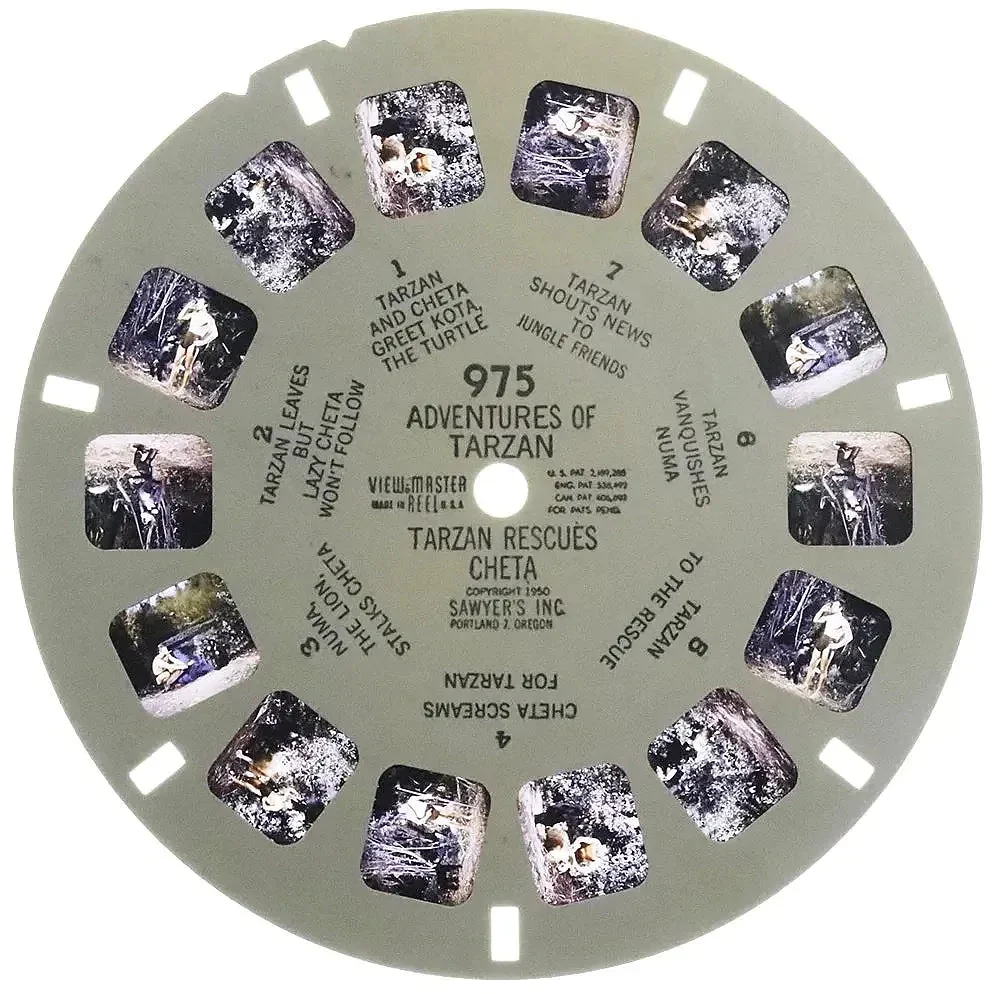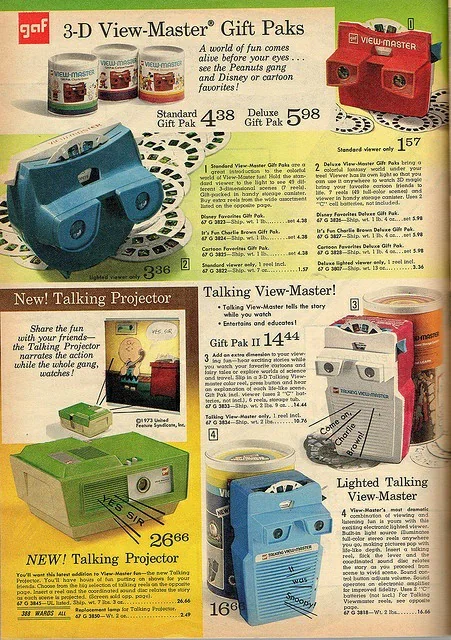I Have Seen The Future!
- Lou Tehnuhnt

- Oct 21, 2024
- 3 min read
Updated: Oct 25, 2024
Before the invention of the internet, unless you had the superpower of “remote viewing,” you could only rely on photographs, newspapers, or word of mouth to get an idea of distant places you had never visited. It was unimaginable to actually see three-dimensional images with colours as vivid as real life, making you feel like you were truly there.
But in the 1930s, a man named William Gruber made this “impossible” a reality. This organ manufacturer invented the View-Master stereoscope in 1939. He designed the device as an upgrade to the traditional stereoscope, which had been used to view 3D images since the 19th century. Gruber collaborated with Portland-based postcard and souvenir company Sawyer’s Inc. to commercialise his invention. The View-Master made its debut at the 1939 New York World’s Fair, a fair themed around the future, showcasing exhibits that carried significant cultural and technological importance. (We’ll explore this fascinating exhibition in detail in an upcoming piece.) What set the View-Master apart was its use of rotating film reels instead of cards. Each reel contained multiple miniature transparent 3D slides, creating a striking three-dimensional effect when viewed through the device.
Initially, the View-Master was targeted at adults, serving as an educational tool for viewing scenic landscapes and landmarks from around the world. However, during World War II, the U.S. military adopted the View-Master for training purposes, producing reels specifically for identifying aircraft, ships, and geographic features. This military application cemented the View-Master’s reputation as a precise optical instrument.

By the 1950s, the View-Master had shifted its focus to a younger audience, expanding its content to include popular culture, cartoons, and family-friendly themes. In 1951, View-Master acquired its competitor, Tru-Vue, and secured the rights to produce reels featuring Disney characters. The introduction of Mickey Mouse, Donald Duck, and other Disney favourites was an instant hit, making View-Master a beloved childhood staple. (Today, early superhero reels from this period fetch astonishing prices at auctions.)
The 1950s and ‘60s marked the View-Master’s golden age as it became a common household item. Alongside cartoons and TV shows, educational reels continued to thrive. The Model G viewer, released in 1956, became a classic with its beige or black plastic casing (early versions were made of Bakelite, and later versions used plastic, a distinction that affects their value in the collector’s market).
The View-Master occupies a unique place in American pop culture. It’s remembered fondly as a simple yet magical toy that presented images in a captivating 3D format. Collectors and enthusiasts still cherish the classic reels, which not only display mid-20th-century entertainment and educational content but also evoke a one-of-a-kind visual experience.
I was introduced to this marvellous device quite by accident at a local antique shop when I was in my 20s. Holding it up to the sunlight and pressing the lever, I was suddenly transported to the Empire State Building and Central Park in New York. For someone who had never been to New York, the experience was nothing short of magical. I’ve shared this toy with countless friends since, and almost every one of them has let out an astonished “Ah!” when they first glimpse the images. I can only imagine how awe-inspiring this toy must have been when it first hit the market—its impact probably rivalled that of the Nintendo Game Boy.
(Sears Roebuck 1955 Christmas Special Edition)
After that discovery, I began collecting reels from various themes: world landmarks, superhero comics, film stills, and even a rare, dead stock NASA reel commemorating the first Apollo moon landing—a reel so precious I’ve never had the heart to open it. This charming toy, with its simple yet unforgettable sense of wonder, represents the kind of timeless and romantic innovation I have always been drawn to.
What captivates me most about products like this is their ability to transcend time. They’re not merely designed to follow trends or make a splash—many of them are quite unassuming in appearance. This kind of enduring appeal is rare in today’s products. The View-Master, in my youth, gave me a glimpse into a future that once seemed out of reach. And it is this inspiration that led me to pursue my dreams and build the future I had once only imagined.
I’m immensely grateful to the View-Master for teaching me the true meaning of innovation. And now, I’ve decided to share this fascinating creation from nearly a century ago with our Lavoro audience. If this piques your interest, please be sure to tell us when you see us next—you, too, might just have seen the future.
Stay tuned for Lavoro’s latest project,
LAVORO STEREO-RAMA
—a glimpse into something entirely new and unseen.

'Til Next Time
L.T

























